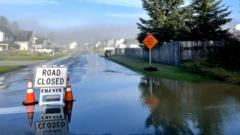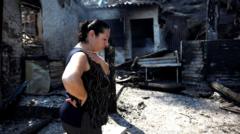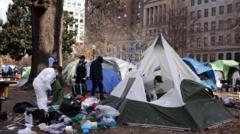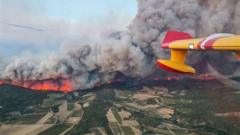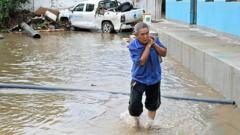As the Hajj reshapes under scrutiny, Saudi officials enhance preparations to ensure safety during the pilgrimage.
Hajj Pilgrimage Faces Heat and Safety Concerns in 2025

Hajj Pilgrimage Faces Heat and Safety Concerns in 2025
Millions of pilgrims get ready for the sacred journey despite pressing issues over climate and past tragedies.
As the hajj approaches, Mecca, Saudi Arabia, braces for what has been described as one of the largest gatherings on the globe starting Wednesday. Amid rising temperatures and previous concerns regarding safety, the pilgrimage poses a significant endurance test for both the pilgrims and the Saudi government.
The kingdom reported over 1.4 million international pilgrims had already arrived by Sunday, highlighting the immense scale of this annual event. However, the shadow of last year's tragedy, where more than 1,300 pilgrims lost their lives—chiefly unregistered individuals—looms over this year's preparations. These deaths occurred in the oppressive heat, raising questions about safety and the effectiveness of the permits designed to offer access to protective measures.
Key details to consider include:
- The significance of Hajj within the Islamic faith
- Preparations made by Saudi authorities for this year’s pilgrimage
- A look back at past accidents during Hajj
- The impact of climate change on the pilgrimage experience
- The protocol for receiving permission to participate in Hajj
The hajj is regarded as one of the five essential pillars of Islam, with every feasible Muslim expected to undertake this haul to the holy city of Mecca at least once in their lifetime. Occurring annually, the sacred pilgrimage generally aligns with a specific timeframe during the Islamic lunar calendar, prompting many pilgrims to arrive early. The extra time allows them to visit Medina, pray in Mecca's Grand Mosque, and engage in the lesser pilgrimage known as Umrah.
As the event nears, Saudi authorities are under pressure to implement robust safety protocols to protect pilgrims from the harsh conditions and ensure that past disasters are not repeated.


